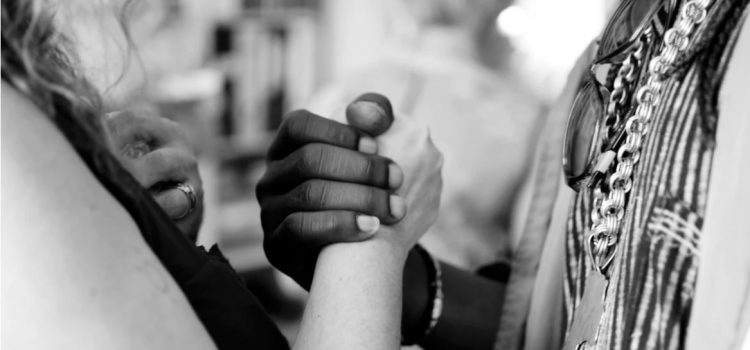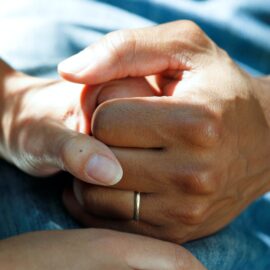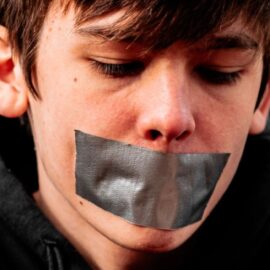

This article is an excerpt from the Shortform book guide to "Atlas of the Heart" by Brené Brown. Shortform has the world's best summaries and analyses of books you should be reading.
Like this article? Sign up for a free trial here .
What is the difference between empathy and sympathy? Can you feel empathy and sympathy at the same time?
According to Brené Brown, empathy vs. sympathy is an important distinction. Empathy is the ability to relate to how the other person feels, while sympathy is feeling bad for them, but failing to relate to them emotionally.
Keep reading to learn about the difference between empathy vs. sympathy, according to Brené Brown.
Empathy Versus Sympathy
According to Brené Brown, empathy vs. sympathy are “near enemies”: they look the same, but there’s no sense of connection.
Brown says that empathy is the ability to understand and echo what someone else feels. However, note that empathy doesn’t mean imagining yourself in someone else’s place, or “walking a mile in his shoes,” as the old saying goes—trying to do so will cause you to bring your own biases and experiences to the situation. Rather, it means that you understand and accept the other person’s feelings, even if they might not be the same feelings you’d have in his place. Brown adds that compassion is empathy plus action: It’s the practice of relating to others and, as a result, acting to ease their suffering.
(Shortform note: Compassion and empathy both literally mean “suffering with.” It’s unclear exactly when or how compassion became associated with action, but many other writers agree with Brown about this distinction. Some add that, because it involves action, compassion is preferable to empathy.)
Brown says that sympathy is the near enemy of empathy. Just the opposite, in fact—sympathy draws a clear line between the person suffering and ourselves. In other words, sympathy is feeling bad for someone, but being unable (or unwilling) to relate to that person.
The author adds that pity is sympathy with a sense of hierarchy: We don’t just feel bad for the person suffering, we feel like he or she is somehow “less than” we are. For instance, drug addicts are common subjects of pity—people often feel bad for them, but also consider them distasteful or dangerous, and they may even blame the addicts for their own situations.
(Shortform note: Another way to recognize sympathy and pity is that they’re inactive states. In other words, we feel like we’re either not able or not obligated to help people whom we feel pity for. For example, if you encountered a drug addict on the street, you could theoretically pay for treatment to help him get better. However, that would require significant sacrifice on your part—sacrifice that you’re likely unable or unwilling to make for a stranger. In short, if you feel a genuine connection and desire to help, then you’re experiencing compassion born from empathy; if you just “feel bad” for someone and don’t feel a strong desire to act, then you’re experiencing pity born from sympathy.)
Pity involves comparison: evaluating or ranking ourselves in relation to others. Those self-assigned “ranks” can affect everything from how we speak to others to how we feel about ourselves.
Brown notes a common misconception about comparisons: Thinking that others are “above” us makes us feel bad, while thinking others are “below” us makes us feel good. In fact, either type of comparison can cause positive or negative emotions. For instance, thinking that someone is stronger, smarter, or more skilled than you could be disheartening, but it could also inspire you to try to reach his or her level. Similarly, thinking that others are worse than you in some way might feed your ego, or it might frustrate you that they don’t live up to your standards.
(Shortform note: Comparison is pervasive and powerful because, as Richard Dawkins explains in The Selfish Gene, competition is hardwired into our biology. Every living organism competes with others: They compete for resources, territory, mates, and so on. Those competitions often involve comparing themselves to each other in some way other than actually fighting. Therefore, they instinctively compare their sizes, weights, and social standings; they might also posture and make threatening displays. Whatever the method, the result is that both competitors know where they stand in relation to each other. That drive for comparison and competition is still inside each of us today.)

———End of Preview———
Like what you just read? Read the rest of the world's best book summary and analysis of Brené Brown's "Atlas of the Heart" at Shortform .
Here's what you'll find in our full Atlas of the Heart summary :
- Brené Brown's guide to the many emotions and mental states that people feel
- Explanations of 87 emotions, along with the situations where you’re likely to encounter them
- How to form deeper connections with the people around you






